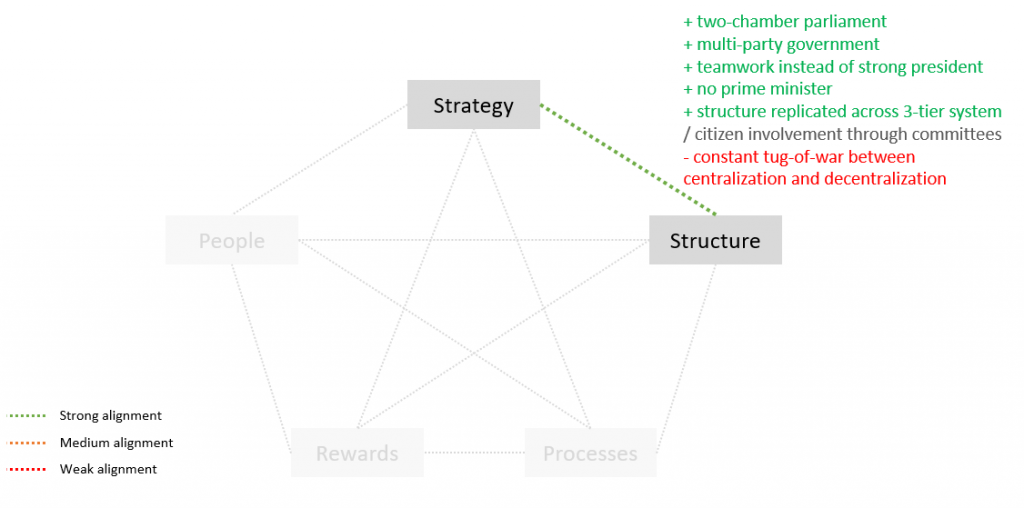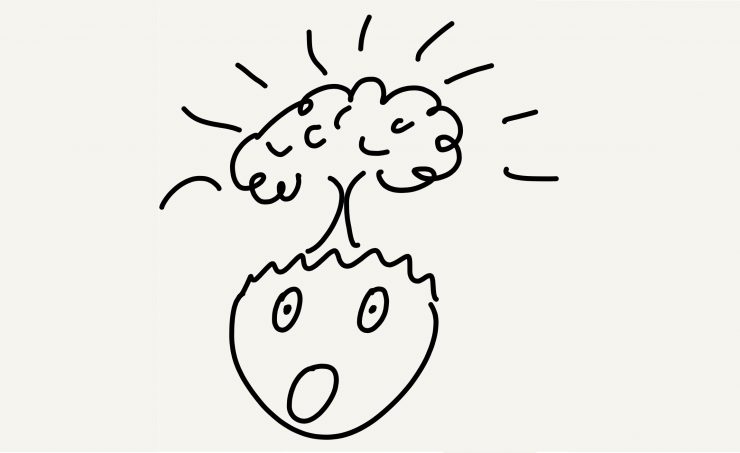“Structure” determines the placement of power and authority. And this is where Swiss Direct Democracy (SDD) really blew my mind. Traditional democracies have three branches of power: legislative, executive and judicial power; i.e. parliament, government and courts. In Switzerland, this is supplemented with a fourth power: citizens. (And the institution of the “Federal Chancellery” act as a hub, connecting the four powers.)
Citizens can propose a change to the constitution, or challenge any recently announced law. For this, citizens should form a Committee of 7-27 people. Because of this system, the jurisdiction over federal constitution and laws is, uniquely, taken over from courts by citizens.
Parliament consists of two chambers. The National Council represents citizens, the Council of States represents Cantons. Proportional representation voting ensures that all political groups are represented, including minorities – resulting in a fragmented parliament, where temporary coalitions are important.
Most interesting to me is the Government. When citizen’s right to challenge a law were introduced in 1874, projects of the governing radical liberal majority were repeatedly “shot down by conservatives as if with a machine gun”. To avoid legislative standstill, a member from the conservatives was invited to join the government. This evolved through the decades into a “magic formula”, where as many as 4 to 5 parties are present in the government. They represent left, center and right-wing politics. Government has only 7 members, who are routinely re-elected, serving multiple terms until they resign. There is no prime minister, rather the government acts as a team. The position of President is only honorific, rotating annually among government members.
The four powers exist on all three layers (federal, cantonal, municipal), with some variations. There is a constant tug-of-war between centralization, and decentralization – some experts describing Cantons as very strong, others as losing power.
Structures strongly align with strategy. The interactions among the powers, i.e. the processes of consensus democracy, are explored in the next section.





















